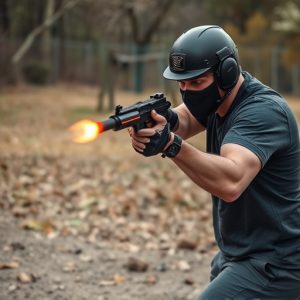Disguised Stun Guns: Unveiling Self-Defense Tool Specifications
Disguised stun guns, blending technology with discretion, offer covert protection by mimicking every…….
Disguised stun guns, blending technology with discretion, offer covert protection by mimicking everyday items like flashlights or pens. They utilize advanced electromotive force (EMF) technology to emit high-voltage, low-current pulses, temporarily disabling attackers without serious harm. Legalities vary globally; responsible use requires understanding regional laws, reasonable force, and electronic control device guidelines. Effective utilization depends on comprehensive training in operation, de-escalation, legal aspects, and targeting techniques. With a range of 2-15 feet and power outputs between 40,000-100,000 volts, they provide discreet personal safety. However, risks include severe injuries or death, limited effectiveness against moving/armored targets, psychological impact, and legal/ethical concerns regarding unauthorized use.
“Unveiling the secrets of hidden power: Exploring Disguised Stun Guns for Self-Defense. In an era where personal safety is paramount, understanding specialized self-defense tools like disguised stun guns is crucial. This comprehensive guide delves into the design and concealment of these devices, revealing their scientific principles and impact. We explore legal considerations, safety features, and user training, dissecting key aspects such as range, power output, and potential risks. Armed with this knowledge, individuals can make informed choices regarding disguised stun guns as viable self-defense tools.”
- Understanding Disguised Stun Guns: Design and Concealment
- The Science Behind Stun Devices: How They Work
- Legal Considerations for Self-Defense Tools
- Safety Features and User Training
- Effective Range and Power Output
- Potential Risks and Debilitating Factors
Understanding Disguised Stun Guns: Design and Concealment
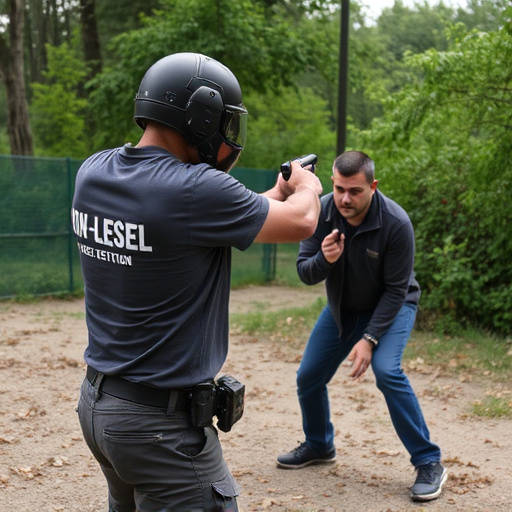
Disguised stun guns are innovative self-defense tools designed to look like everyday, innocuous items, such as flashlights or pens. This clever concealment is a double-edged sword; it allows for covert protection, but also raises awareness about the potential for misuse. These stun devices pack a surprising punch, delivering a high voltage jolt that can immobilize an attacker without causing permanent harm.
The art of disguise involves intricate engineering to integrate the stun functionality seamlessly into everyday objects. From external design to internal wiring, each element is meticulously crafted to ensure both effectiveness and discretion. This blend of technology and deception makes disguised stun guns appealing to those seeking effective personal safety without drawing unnecessary attention.
The Science Behind Stun Devices: How They Work
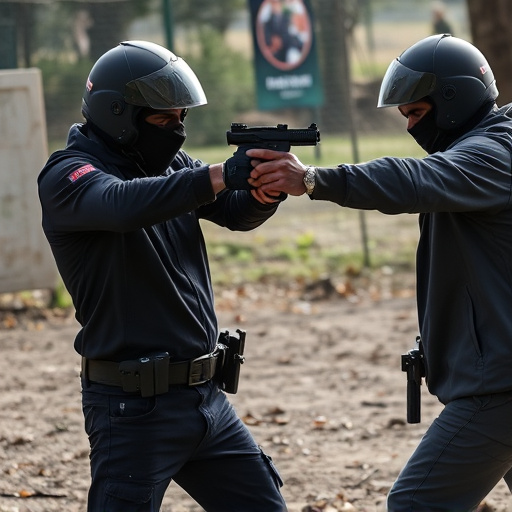
Stun devices, often disguised as everyday objects like flashlights or personal care items, leverage advanced electromotive force (EMF) technology to incapacitate an assailant temporarily. When activated, these devices emit a powerful electrical charge designed to disrupt muscle control in the target area, typically through high-voltage, low-current electrical pulses. This interference is enough to disable an attacker without causing serious harm, making them valuable self-defense tools for individuals seeking protection.
The effectiveness of stun guns lies in their ability to deliver a shock that overloads the body’s nervous system, sending incorrect signals to muscles and leading to momentary paralysis. This effect can last from several seconds to a few minutes, providing users with crucial time to escape or call for help. Modern stun devices are designed with various features, such as adjustable voltage settings and different modes of operation, allowing users to tailor the level of force needed based on the threat and situation at hand—all while maintaining a low profile, making them accessible concealed carry options for those prioritizing discreet self-defense tools.
Legal Considerations for Self-Defense Tools
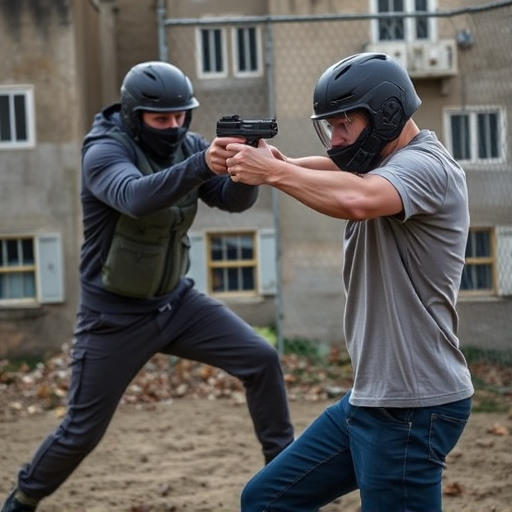
The legal landscape surrounding self-defense tools, especially those with electrical charge capabilities, is complex and varies significantly across jurisdictions. When considering the use and possession of a disguised stun gun as a self-defense mechanism, it’s imperative to understand local, state, or national laws. Many regions have strict regulations on stun guns, including restrictions on who can own them, where they can be carried, and how they can be used.
For personal protection, individuals must ensure these tools are employed responsibly and in accordance with the law. This involves understanding the legal definition of reasonable force in self-defense and adhering to any specific guidelines for using electronic control devices (ECDs) as a means of defense. Possessing and utilizing a disguised stun gun for self-protection should be a well-informed decision, balancing personal safety needs against public safety considerations and legal boundaries.
Safety Features and User Training
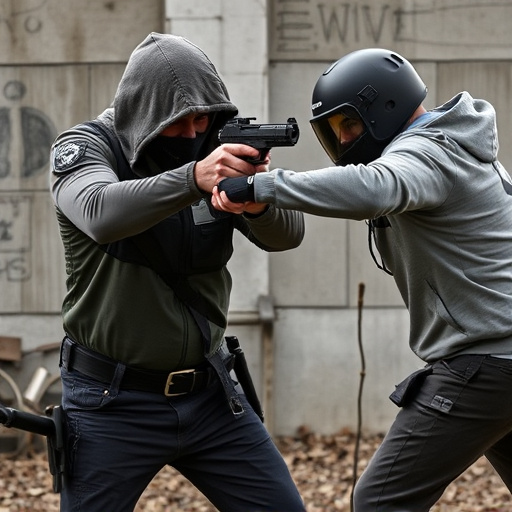
When it comes to weapons designed with safety in mind, the disguised stun gun stands out as a revolutionary tool for self-defense. These devices are engineered to look like everyday objects, such as flashlights or pens, making them easily concealable and less conspicuous than traditional firearms. This discreet nature enhances their effectiveness as preventive measures, allowing users to defend themselves without drawing unnecessary attention.
User training is paramount for ensuring the safe and responsible use of stun guns. Comprehensive instruction should cover not only the operation of the device but also de-escalation techniques, legal considerations, and proper targeting. Proper training empowers users to make informed decisions in high-pressure situations, minimizing risks and maximizing the effectiveness of these self-defense tools.
Effective Range and Power Output
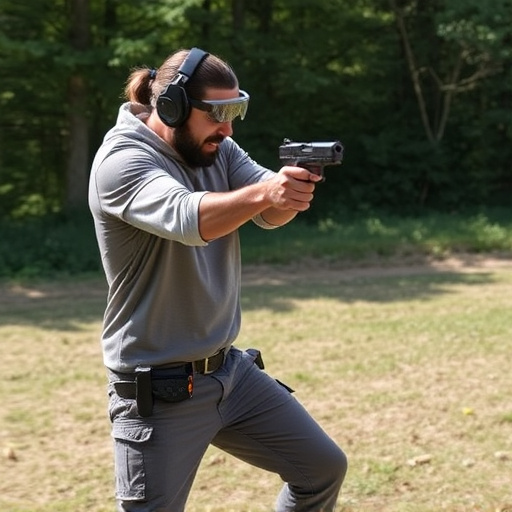
The effectiveness of a hidden stun gun as a self-defense tool is closely tied to its range and power output. Disguised stun guns are designed to be compact, often mimicking everyday objects like flashlights or pens, making them easy to carry discreetly. In terms of range, these devices typically operate within a close to medium proximity, generally between 2 to 15 feet (0.6 to 4.6 meters). This limited range is intentional, as it ensures the user has sufficient control over the situation and minimizes the risk of collateral damage or accidental discharge at a distance.
Power output is another critical factor. Stun guns deliver an electric shock that temporarily incapacitates the target by disrupting muscle control. Higher voltage and current outputs result in more intense shocks, but they also require careful handling to avoid user injury. Effective power levels for stun guns range from 40,000 to 100,000 volts, with currents ranging from 3 to 5 milliamps. These specifications ensure the device is powerful enough to subdue an attacker while remaining safe and legally acceptable for self-defense purposes.
Potential Risks and Debilitating Factors
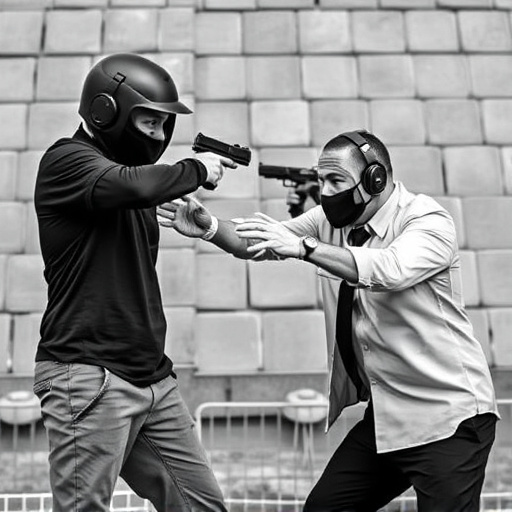
The potential risks associated with electrical charge weapons, such as stun guns, should not be understated. These tools, while marketed as self-defense mechanisms, can have significant debilitating factors that users may not readily appreciate. One of the primary concerns is the risk of excessive force or accidental discharge, which could lead to severe injuries or even death for both the intended target and bystanders. Moreover, stun guns often rely on physical contact to deliver a jolt, meaning their effectiveness can be limited in certain situations, like wet environments or when targeting moving or armored individuals.
Additionally, the psychological impact cannot be overlooked. The sight and shock of such a device can trigger intense fear and disorientation, making them potent tools for manipulation or coercion. The legality and ethical implications further complicate matters, as many jurisdictions have strict regulations regarding their use and possession. Furthermore, disguised stun guns, while appealing for discreet self-defense, might blur the lines between personal safety and aggressive or unauthorized use, adding another layer of complexity to an already fraught topic.
In conclusion, while disguised stun guns offer potential as self-defense tools, their effectiveness and safety are contingent upon understanding their intricate design, power output, and legal boundaries. Responsible ownership necessitates training, safety features, and awareness of potential risks. As with any weapon, informed decision-making and adherence to legal guidelines are paramount for those considering disguised stun guns as personal defense mechanisms.
